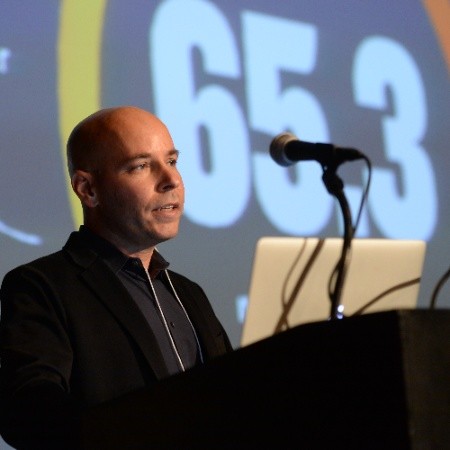Close your eyes for a minute and try to visualize sustainability. What image comes to your mind? Is it a sad polar bear standing on a melting ice cap or a long line of giant wind turbines standing in a field? If you’re thinking of the latter rather than the former and know how to shoot a good picture as well, the Global Reporting Initiative (GRI) has a competition that might be of interest for you.
GRI’s image competition is held as part of GRI’s preparations for the launch of their new website later on this year. According to GRI, “the new website will cater to the needs of GRI’s audience and greatly improve user experience for both first time and more advanced reporters. A key feature of the new site will be its images - provided by the winners of GRI’s Image competition.”
Images of sustainability are opened of course for interpretation, but GRI wants only positive ones, or in their words “the tone and feeling of the images should be positive and aspirational,” which means no entry for any doom and gloom shots. Spare those for the sequel of An Inconvenient Truth.
You might wonder if it really matters what images will be on the GRI’s website. It certainly makes sense that sustainability needs rebranding when it comes to changing consumers’ behavior as my colleague Ali Hart explained it here last week, but do positive images (and a positive approach in general) really make any difference when it comes to sustainability reporting?
Crystal Crawford, GRI's Senior Communications Coordinator thinks they do make a difference. “GRI’s mission is to mainstream sustainability reporting. Part of this involves communicating to different audiences about how organizations can face the sustainability challenges the world is facing. Images give a new dimension to this communication and help people to understand the relevance and importance of sustainability report,” she explains.
I think she’s right. Whether it is a CEO that enters the website to learn more about sustainability reporting or a stakeholder looking to find information on a specific company or to better understand how these reports work, image is important. It is important because it shapes their perception about sustainability and therefore that perception should be positive and not negative. It should also be business oriented.
Yes, business oriented. If the first generation of sustainability images (susimage 1.0) was all about doom and gloom (the poor polar bear), and the second generation (susimage 2.0) was about good intentions and saving planet earth (check the current photo on GRI’s website and see what I’m talking about), then the third generation (susimage 3.0) is all about business.
Why? Because sustainability has became a strategic priority for a growing number of companies not because these companies care about polar bears or want to save mother earth, but because of the benefits sustainability generates for their business. For example, KPMG released last month a report, ‘Corporate sustainability: A progress report,’ which found that the main drivers behind the adoption of suitability in companies they surveyed are regulatory requirements, brand enhancement, risk management with sustainability issues and cost reduction.
Sustainability reporting, GRI’s main focus, is no different as this study explains. Companies conduct these reports to meet stakeholders’ expectations and provide them with a clear view on the companies’ progress. The challenges companies are facing when it comes to reporting are also mainly business oriented, from how to generate the relevant data to establishing the right benchmarks.
This is why I’m happy to see that GRI is making a specific note that participants in the competition are encouraged to submit images related to industry sectors, such as oil and gas, financial services and construction and real estate. It shows they understand what companies are looking into when they consider if and how to adopt sustainability. They also understand that images of successful sustainable solutions will be much more helpful in making sustainability reporting mainstream than images of new trees or poor polar bears.
It might also be a sign that stakeholder engagement is becoming more business oriented. It’s not that stakeholders want businesses to do the right things, reduce their environmental impacts and do more good to society any less, but they also understand that to make sustainability an integral part of a company, it needs to generate greater profitability and efficiency to the company as well.
If you also feel this way and think you can capture it in a photo, you can still participate in the competition (entries will be accepted until June 30th) and who knows, maybe your picture will be among those who will help reshaping the new image of sustainability on GRI’s website.
Raz Godelnik is the co-founder of Eco-Libris, a green company working to green up the book industry in the digital age. He is also an adjunct professor in the University of Delaware’s Alfred Lerner College of Business and Economics.
Want to learn more?
Jurat Software enables you to centralize engagement projects into a single database, sharing information, retaining corporate knowledge and reporting globally.
[contact-form 2 "Jurat Email"]

Raz Godelnik is an Assistant Professor and the Co-Director of the MS in Strategic Design & Management program at Parsons School of Design in New York. Currently, his research projects focus on the impact of the sharing economy on traditional business, the sharing economy and cities’ resilience, the future of design thinking, and the integration of sustainability into Millennials’ lifestyles. Raz is the co-founder of two green startups – Hemper Jeans and Eco-Libris and holds an MBA from Tel Aviv University.














